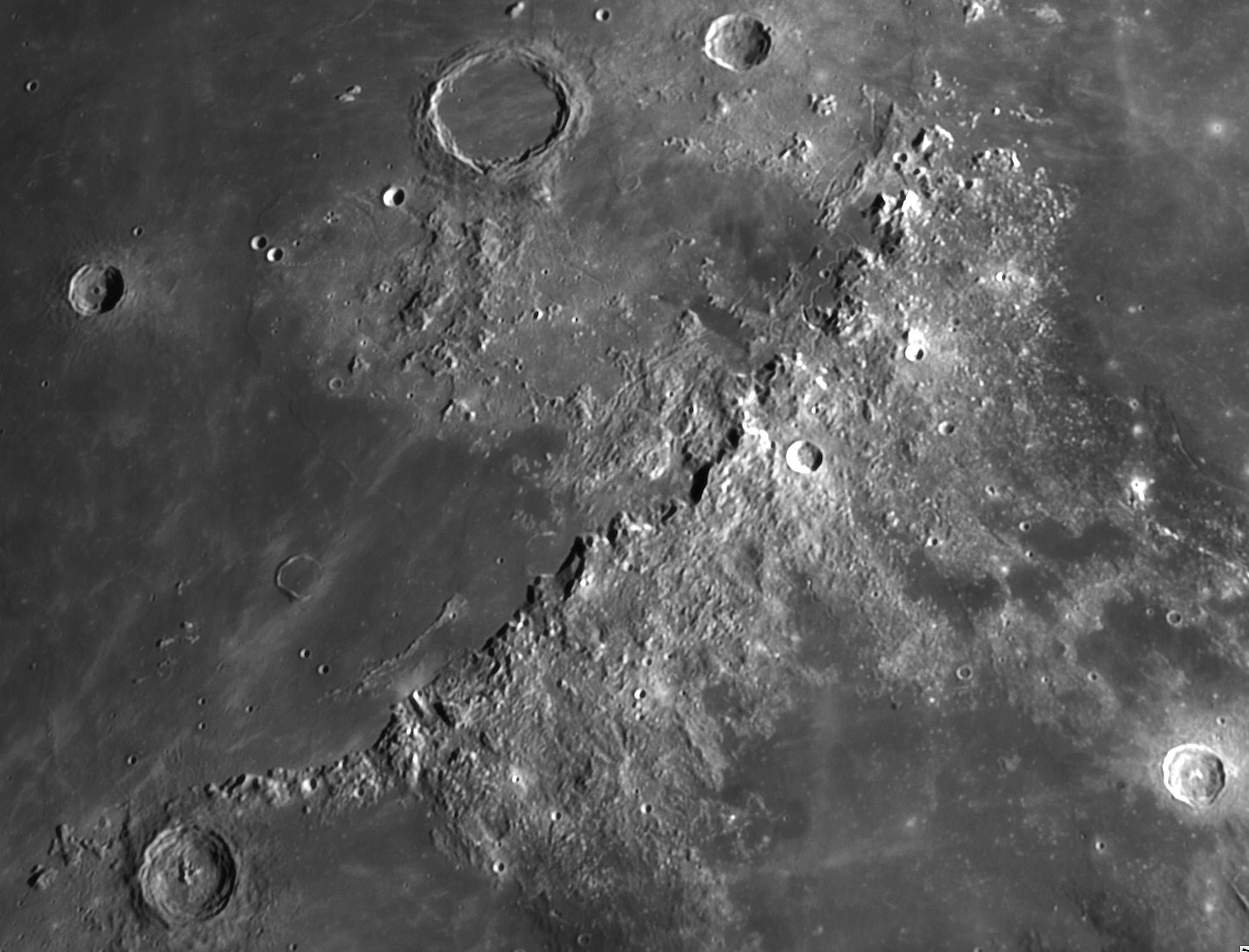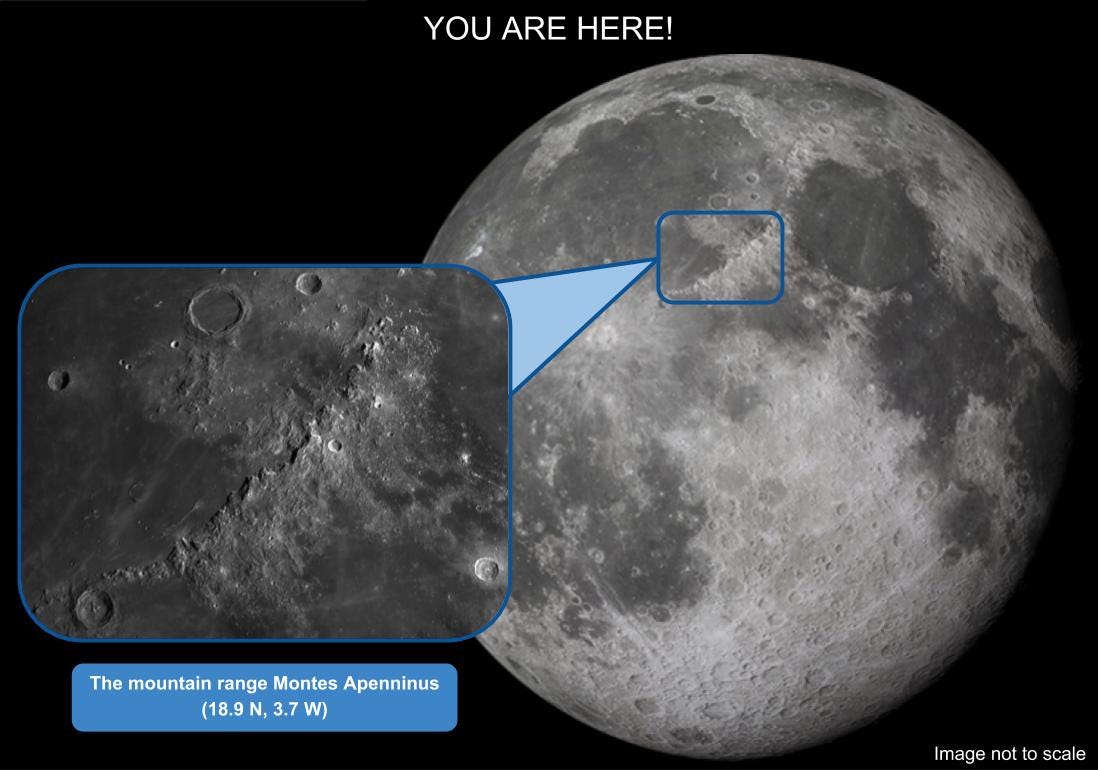The Moon's most prominent mountain range
Glorious Montes Apenninus.
Seen here is a lunar mountain range that stretches 600 kilometers in length. Called Montes Apenninus, it forms the south-eastern border of Mare Imbrium.

Montes Apenninus was formed ~3.8 to 3.9 billion years ago when the basin of Mare Imbrium was excavated as a result of an impact by an asteroid-sized body. The impact uplifted nearby crustal material to form the arc-shaped mountain range.
Montes Apenninus is home to Mons Huygens, which soars 5.5 kilometers high. On the east end of the mountain range lies Mons Hadley, near which NASA's historical Apollo 15 mission landed. From Apollo 15 rock samples, we know that the impact that formed Imbrium basin happened several hundred million years before the volcanic eruptions that filled the basin.
Montes Apenninus is a part of a distinct geological feature we see on the Moon called multi-ring impact basins. Landing in such regions is key to understanding how multi-ring basins form and evolve on the Moon and other planetary bodies.

